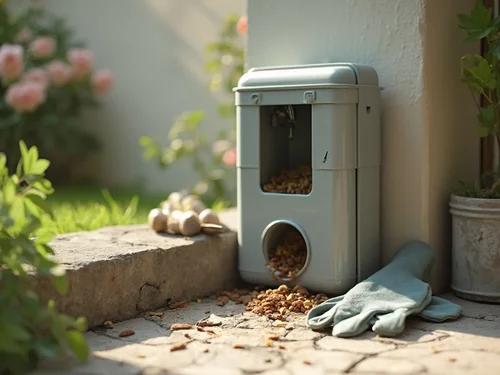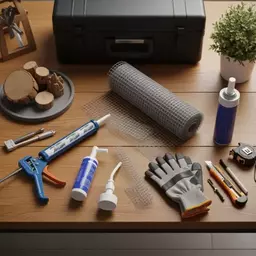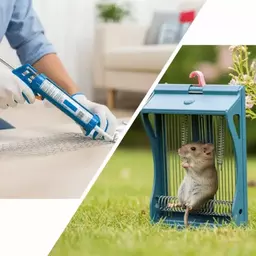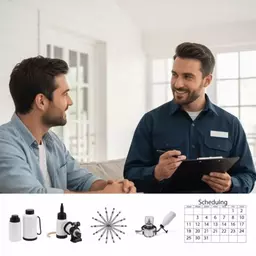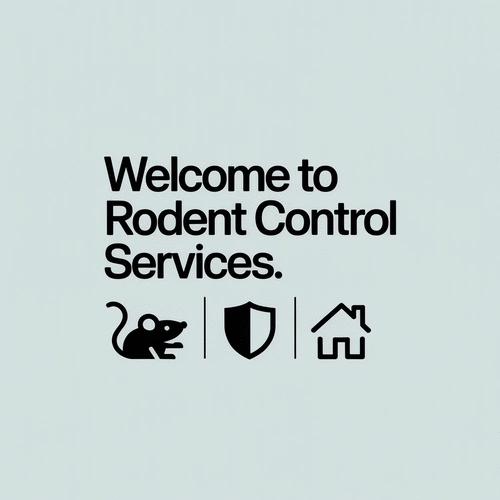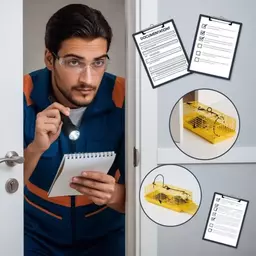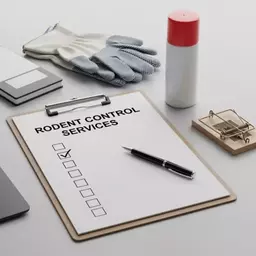What if I told you that a simple device could drastically reduce the rodent population in your home? Understanding the function and importance of rodent bait stations is essential for anyone looking to manage pest issues effectively. In this guide, we'll explore how these tools can safeguard your living space while ensuring the safety of your family.
What You Will Learn
- Rodent bait stations are secure containers designed to attract and eliminate rodents safely.
- Choosing tamper-resistant bait stations is crucial for protecting children and pets.
- Regular inspection and maintenance of bait stations are essential for effective rodent control.
- Monitoring rodent activity helps in adjusting pest management strategies effectively.
Key Aspects of Rodent Bait Stations
This visual outlines the operational aspects, safety considerations, and ongoing management steps for effective rodent bait station use.
How Rodent Bait Stations Work
Attraction: Bait lures rodents in.
Consumption: Rodents consume the bait.
Elimination: Bait helps control population.
Key Safety & Selection Factors
- Tamper-Resistant Designs: Protect children & pets.
- Durability: Withstand weather for lasting effectiveness.
- Compliance: Meet local regulations.
Next Steps: Monitoring & Adjustment
- Monitor Weekly: Check for activity.
- Replace Bait: Every 2-4 weeks.
- Document Signs: Droppings, gnaw marks.
- Adjust Strategy: Based on rodent behavior.
Understanding Rodent Bait Stations: Purpose and Importance
When it comes to managing rodent populations, understanding the role of rodent bait stations is crucial. These specially designed devices serve as a controlled method for delivering bait to rodents, allowing us to effectively manage infestations while minimizing risks to our homes and loved ones. In this section, we’ll dive into what rodent bait stations are, how they function, and why they’re an essential part of any comprehensive rodent control strategy.
So, what exactly are rodent bait stations? Essentially, they are secure containers that hold bait designed specifically to attract and eliminate rodents. They can be placed both indoors and outdoors, depending on the environmental needs and the extent of the infestation. Each bait station typically contains a locking mechanism to prevent access to non-target species, ensuring that only the intended pests can reach the bait within. Understanding how these systems work is the first step in leveraging their benefits effectively.
What Are Rodent Bait Stations and How Do They Work?
Rodent bait stations are designed to attract rodents by using bait that appeals to their natural instincts. Here's a quick look at how they operate:
- Attraction: The bait inside the station lures rodents in.
- Consumption: Once inside, rodents consume the bait.
- Elimination: The bait is often toxic, leading to the death of the rodent, which can help control the overall population.
These stations are an effective way to systematically reduce rodent numbers in a targeted manner. For more detailed information on rodenticides and their safe use, you can refer to resources from the Environmental Protection Agency (EPA), which provides comprehensive guidelines on pesticide regulation and safety. This approach helps control rodent populations without exposing pets or children to unnecessary risks. As we explore further, you'll see just how instrumental these devices can be in keeping your environments safe and pest-free.
Why Choosing the Right Rodent Bait Station Matters for Safety
Selecting the appropriate rodent bait station is vital for ensuring the safety of your household and the surrounding area. Not all bait stations are created equal, and here’s why the right choice matters:
- Safety Features: Look for tamper-resistant designs to keep children and pets safe. The CDC offers guidance on safe rodent control practices, including securing bait from non-target animals.
- Durability: A well-made bait station withstands weather conditions, ensuring that the bait remains effective over time.
- Compliance: Choosing bait stations that meet local regulations can help you avoid legal issues down the line. Many local health departments, such as the Los Angeles County Department of Public Health, provide practical guides for rodent control that emphasize compliance with safety standards.
At Rodent Control Services, I emphasize the importance of these factors based on years of experience in the field. My clients often share that understanding the safety aspects of bait stations has empowered them to use them with confidence in their homes and workplaces. By prioritizing safety in your rodent control efforts, you're taking significant steps toward protecting both your property and those who inhabit it!
Interactive Poll: Your Experience with Rodent Bait Stations
Have you ever used rodent bait stations in your home or workplace? We'd love to hear about your experience! Please take a moment to share your thoughts:
Summarizing Key Points for Safe Rodent Control
As we wrap up our discussion on rodent bait stations, it’s crucial to highlight the importance of safety and effectiveness in your pest control efforts. Remember, using bait stations is a proactive measure that can aid in managing rodent populations, but it must be done with care. Here are some key points to keep in mind:
- Always select bait stations that are tamper-resistant to protect children and pets.
- Regularly inspect bait stations to ensure they are functioning and replenished with bait.
- Consider the placement carefully to avoid unintended access by non-target wildlife.
- Stay informed about local regulations regarding the use of rodenticides.
By following these guidelines, you can ensure that your approach to rodent control is both effective and responsible. It’s all about achieving that delicate balance between safety and pest management.
Final Thoughts on Using Rodent Bait Stations Effectively
When it comes to using rodent bait stations, my experience has shown that the key is consistency. Regular check-ins not only help you maintain the bait stations but also give you peace of mind knowing that your environment is protected. Think of bait stations as part of a larger pest management strategy, one that works best when combined with other preventative measures, such as sealing entry points and maintaining cleanliness.
Remember, it’s not just about setting up these stations; it’s about monitoring their effectiveness and making adjustments as necessary. If you notice a decline in rodent activity, that’s a fantastic sign! But if the problem persists, it might be time to re-evaluate your approach or consult with a pest management professional.
Next Steps: Ensuring a Rodent-Free Environment
Taking Action: What to Do After Setting Up Your Bait Stations
After you’ve set up your bait stations, the next step is to take action! Here are some recommended steps to follow:
- Monitor the bait stations weekly to check for rodent activity.
- Replace bait as needed, typically every 2-4 weeks, depending on usage.
- Document any signs of rodent activity, such as droppings or gnaw marks.
- Stay aware of changes in rodent behavior, which can indicate a need for more aggressive control measures.
By keeping a close eye on your bait stations and taking these actions, you can effectively manage rodent populations.
Encouraging Safe Practices and Continuous Monitoring
It's essential to maintain safe practices while managing rodent populations. Continuous monitoring is key to ensuring that the bait stations are working effectively. Consider implementing a log to track bait usage, monitoring dates, and any changes in rodent activity. This will help you stay organized and make informed decisions based on the data you collect!
Moreover, educate your family or colleagues about the importance of these practices. When everyone is on the same page, it fosters a collective effort towards maintaining a rodent-free environment.
Using Signs of Infestation to Adjust Your Pest Management Strategy
Lastly, understanding the signs of rodent infestation can significantly influence your pest management strategy. Keep an eye out for:
- Visible droppings near bait stations or entry points.
- Gnaw marks or nesting materials within your property.
- Strange noises, especially at night when rodents are most active.
By recognizing these signs early, you can adjust your strategies accordingly. Perhaps it’s time to bring in a professional, or maybe it’s just about adjusting the bait type or placement. Whatever the case, being proactive will always yield better results!
Frequently Asked Questions (FAQs)
- What are rodent bait stations?
- Rodent bait stations are secure containers designed to hold bait that attracts and eliminates rodents, helping to control their population safely.
- How do rodent bait stations work?
- Rodents are lured into the bait station by the bait, consume it, and the bait's toxic properties then help to eliminate the rodents, reducing the overall population.
- Why is choosing a tamper-resistant bait station important?
- Tamper-resistant designs are crucial for safety, as they prevent children, pets, and non-target wildlife from accessing the bait, minimizing accidental exposure.
- How often should I inspect and maintain bait stations?
- Bait stations should be monitored weekly for rodent activity and replenished with bait as needed, typically every 2-4 weeks, to ensure continuous effectiveness.
- What are the key safety considerations when using bait stations?
- Key safety factors include selecting tamper-resistant and durable stations, ensuring compliance with local regulations, and placing them strategically to avoid access by non-target species.
Recap of Key Points
Here is a quick recap of the important points discussed in the article:
- Always select tamper-resistant bait stations to ensure the safety of children and pets.
- Regularly inspect bait stations for functionality and replenishment of bait.
- Carefully consider the placement of bait stations to avoid unintended access by non-target wildlife.
- Stay informed about local regulations regarding the use of rodenticides.
- Document signs of rodent activity and adjust your pest management strategy as needed.

